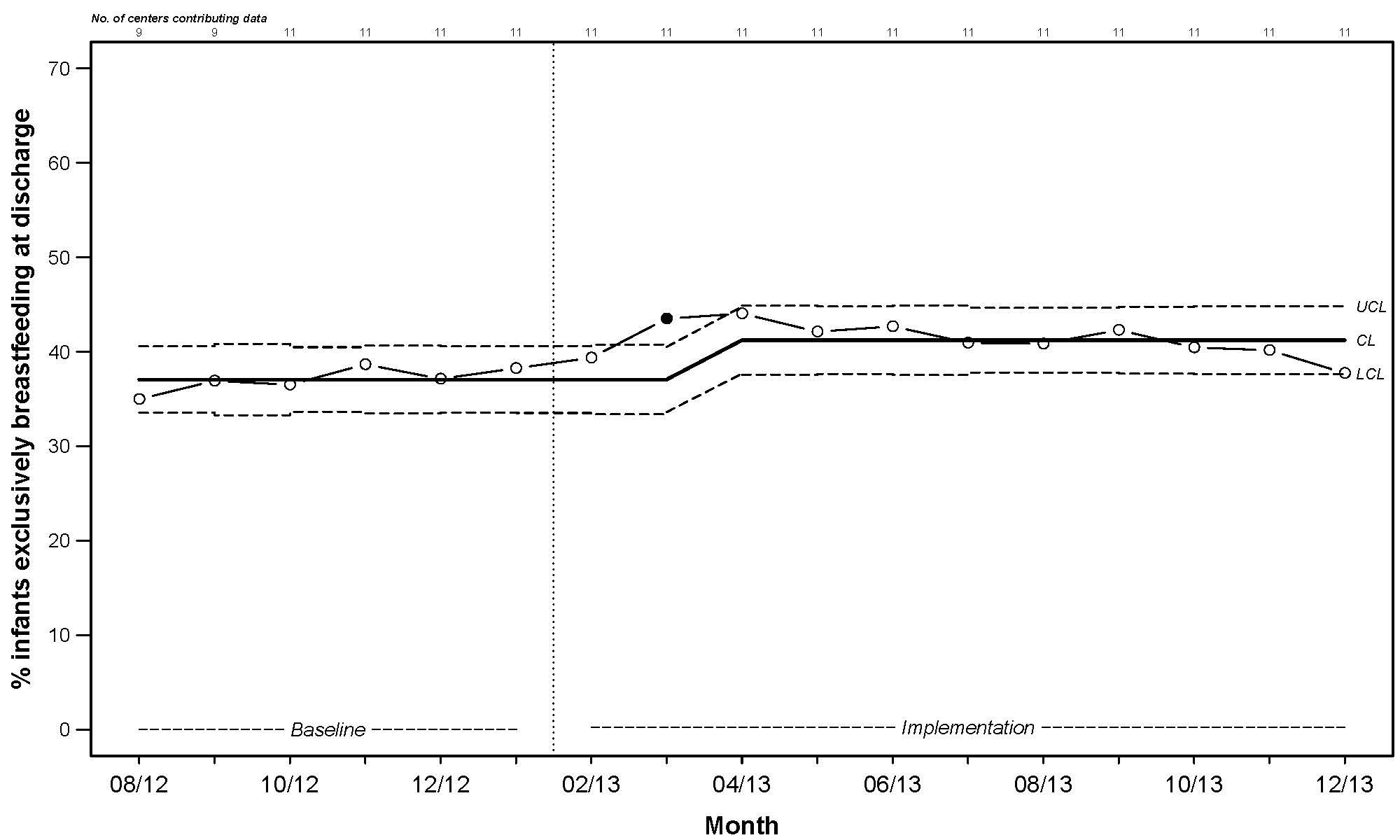Years Active: 2012-2016
Breastfeeding Promotion:
Delivery and Postpartum
PROJECT AIM:
The aim of this project is to improve the health of infants and mothers in Tennessee by increasing initiation and duration of breastfeeding through systematically promoting and supporting breastfeeding. While barriers to successful breastfeeding exist in multiple settings, we will focus on high reliability (>90%) implementation of processes that promote and support breastfeeding in the delivery and hospital setting.
Immediate aim: Thus, we seek to increase the fraction of infants who are exclusively fed breastmilk at hospital discharge by 10% by March 2013 (Wave 1), and again by December 2016 (Wave 2.)
Long term aim: To eliminate barriers in delivery and hospital settings to achieving the Healthy People 2020 goal.
At TIPQC’s first annual statewide meeting in 2009, the Obstetric community voted to develop a project to promote human milk feeding. A project development group was convened to review Tennessee’s mPINC scores, progress toward the Healthy People 2020 goals, identify locally successful strategies to promote breast milk feeding, and develop a project to improve the rates of breast milk feeding across the state. The challenge of improving human milk utilization was divided into three components: antenatal, hospital, and postnatal. This project, Breastfeeding Promotion: Delivery and Postpartum, uses the Joint Commission’s Perinatal Core Measure 05 (TJC PC-05) as the project outcome measure, and seeks to increase exclusive breast milk feeding by working toward high reliability implementation of the World Health Organization’s 10 steps to successful breastfeeding.
Eleven delivery hospitals representing 48% of deliveries in Tennessee joined the collaborative effort in 2012, and by the end of 2013 increased the project wide aggregate TJC PC-05 from 37% to 42%, a relative increase of 13.5% . (Wave 1 preliminary provisional QI data at right.) In late 2013, project teams voted to continue work on implementation of the 10 steps to successful breastfeeding.
In collaboration with the Tennessee Department of Health and the Tennessee Hospital Association, and with additional funding from the Centers for Disease Control and Prevention, Wave 2 was started in 2014 with a second enrollment period to allow additional facilities to join the collaborative effort. The Wave 2 aim seeks to increase exclusive breast milk feeding at discharge by 10% relative to the new Wave 2 baseline that aggregates TJC PC-05 data for all Wave 2 participants. Eighteen Wave 2 teams concluded the active improvement phase of the project at the end of 2015 having improved aggregate TJC PC-05 rates from 40.9% to 44.8%. Provisional analysis of preliminary data from the 2016 sustainment phase shows stable TJC PC-05 rates for the 9 teams that submitted sustainment data.

Participating
Hospital Teams
WAVE 1 TEAMS
- Baptist Memorial Health Care
- Erlanger Health System
- Johnson City Medical Center
- Maury Regional Medical Center
- Methodist LeBonheur Healthcare – Germantown
- Methodist Healthcare – South Hospital
- Monroe Carell Jr. Children’s Hospital at Vanderbilt
- NorthCrest Medical Center
- Regional One Health
- Saint Thomas – Midtown Hospital
- Sumner Regional Medical Center
- TriStar Centennial Medical Center
- University of Tennessee Medical Center, Knoxville
WAVE 2 TEAMS
- Erlanger Health System – East Campus
- Fort Sanders Regional Medical Center
- Franklin Woods Community Hospital
- Hardin Medical Center
- Indian Path Medical Center
- Jackson-Madison County General Hospital
- Laughlin Memorial Hospital
- LeConte Medical Center
- Methodist Medical Center of Oak Ridge
- Morristown-Hamblen Healthcare System
- Parkwest Medical Center
- Saint Francis Hospital – Bartlett
- Saint Francis Hospital – Memphis
- Saint Thomas – Rutherford Hospital
- TriStar Horizon Medical Center
- University Medical Center
- Williamson Medical Center
TIPQC is actively recruiting devoted health care professionals, community leaders and patient and family partners to further our mission of improving health outcomes for mothers and babies in Tennessee.